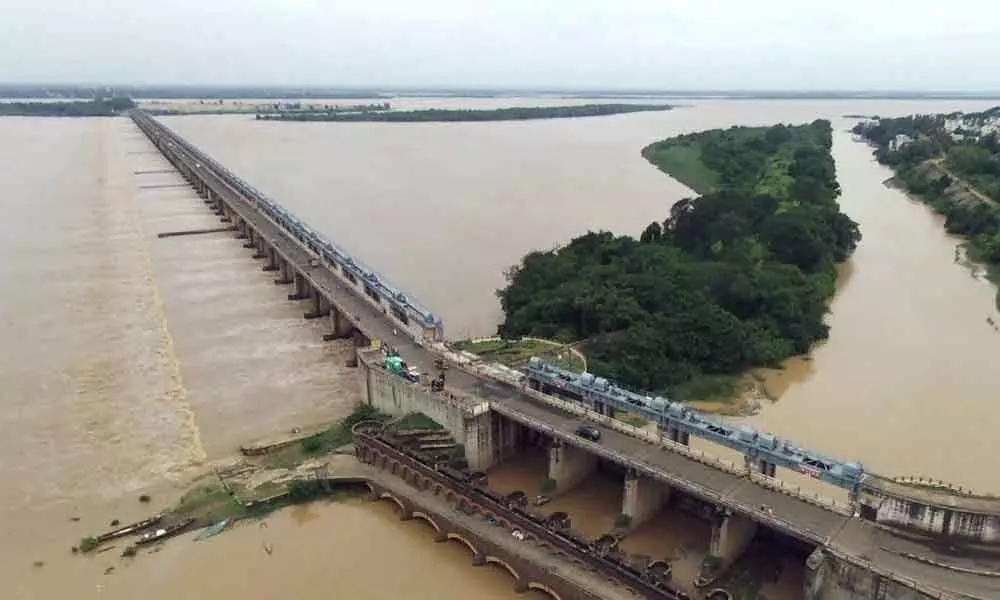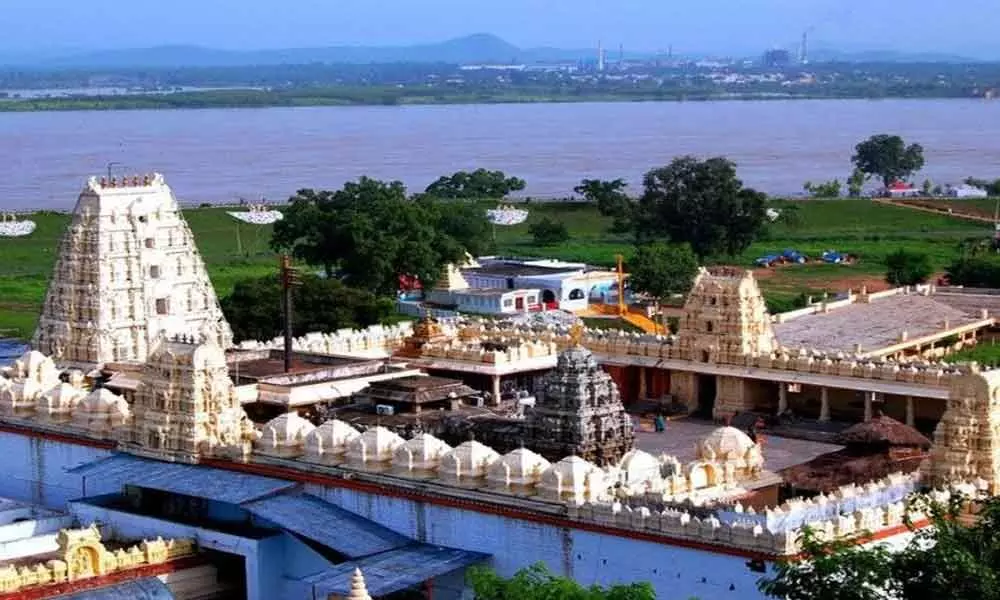Live
- BJP MP candidate Bharat Prasad visited the student who tried to commit suicide
- PM’s popularity in the fast lane: Autos with 'Har Dil Mein Modi' slogan spotted across Delhi
- Delhi-based political parties are like East India Company: Sukhbir Badal
- Golf: Diksha moves into Top-20 at South African Women’s Open
- KCR lashes out against BJP and Congress for destroying Telangana
- Dairy Science students visited the Milk cooling plant
- Moody feels Pant ahead in keepers’ race for T20 WC squad; Srikkanth picks Rahul over Samson as reserve keeper
- Thanking voters for extending 'unparalleled support' to NDA, PM Modi says second phase 'too good'
- Natural Relief for Menstrual Cramps: Beetroot Juice Recipe
- Asha Worker died in a road accident
Just In
Notwithstanding the religious faith it carries, the 1,465-km-long Godavari, also known as Dakshin Ganga, from its rise near Trimbakeshwar to its emptying into the Bay of Bengal. It brings life, culture, and a host of controversies and conflicts as well on its way, crisscrossing lush green Western Ghats of Maharashtra before flowing first eastwards across the Deccan Plateau and then Southeast entering the Godavari districts of Andhra Pradesh.
The second largest river in the country after the Ganges, Godavari travels through Maharashtra, Telangana, and AP. At the same time, its basin also includes parts of Madhya Pradesh, Karnataka, Chhattisgarh and Odisha. The Godavari basin, extending over an area of 3 lakh square km, covers 9.5 percent of the country's total geographical area, which includes a population of more than 60 million.
While traversing through three agro-climatic and six agro-ecological zones, the basin also supports an astounding array of biodiversity, besides carrying the myth of Ramayana. It's evident that many a place along the course of the river from Nasik, believed to be part of Dandakaranya where Lord Rama resided for about 14 years as part of Vanavasam, to Bhadrachalam in Telangana, reflect the sequence of the myth of Ramayana.
It may be mentioned here that according to legend, the place where Lakshmana cut off the nose of Surpanakha was named as 'Nasik' (in Sanskrit, Nasika means nose). Parnasala, 35 km from Bhadrachalam, on the banks of the river, has mythological significance. We can see Sita Vagu and Radha Gutta, where Goddess Sita used to bathe and dry her clothes.
It's said that demon king Ravana, who parked his Pushpaka on a hillock on the opposite side of the river, abducted Goddess Sita from Parnasala. This is also the place where Lord Rama killed Maricha, who came disguised as a golden deer to deceive Sita.
On its way, Godavari also carries a host of controversies and conflicts. Flowing through the Eastern Ghats before emerging out at Polavaram into the plains, the river and its basin also carry long-drawn and oft-repeated intrastate water conflicts between the stakeholders. From the upstream Jayakwadi (Maharashtra) dam to the far down Polavaram (AP) reservoir, the conflict does not seem to subside with entrenched positions of the stakeholders.
Lower Penganga, Gosikhurd, and the upcoming Pranahita Chevella projects are also thick of water-sharing conflicts. Like all rivers, the Godavari also faces severe pollution from urban and rural sewage, agricultural runoff, and industrial effluents.
From its origin to its mouth at the Eastern coast, the Godavari river that traverses a significant part of Peninsular India is a niche for several rich cultures: from Deccan plateau to Adivasi culture in the Dandakaranya region to a vibrant delta system near Rajahmundry.
Cultural context
Rivers are fountainheads of creative energy. The Godavari has always fascinated and captured the imagination of the poets, and it is indeed a source of inspiration to innumerable poets. Viswanatha Satyanarayana's Kinnerasani (a tributary of Godavari), Patalu, Bala Gangadhar Tilak's contrasting thoughts, and Endluri Sudhakar's modern poetic reflections – all present life along the banks of Godavari in different dimensions.
Cinema is a powerful media, and its tryst with the Godavari dates back to several decades. The ANR-starrer classic 'Andala Ramudu' (1973), directed by Bapu, mirrored the life associated with the mighty river. Its story revolved around a boat cruise in the Godavari from Rajahmundry to Bhadrachalam, the abode of Sri Sitaramachandra Swamy temple. Director Vamsi's obsession with the Godavari is well known. Almost all his films were canned in the backdrop of Godavari. Sekhar Kammula's Godavari is yet another classic movie entirely made in the natural settings of the river. It's no exaggeration to say that every film showcased the beauty of the river, with each capturing in different dimensions.
The major pilgrimage sites on the banks of River Godavari are as follows:
* Nasik: One of the four Sinhasta Kumbh Melas
* Trimbakeshwar: One of the 12 Jyotirlingas and an ancient temple of Lord Shiva.
* Nanded: One of the five holiest sites of Sikhism, Takht Sri Hazur Sahib
* Basar: Sri Gyana Saraswati Temple
* Dharmapuri: Temple of Lord Narasimha
* Kaleshwaram: Sri Kaleshwara Mukteshwara Swamy temple and the confluence of the Godavari, Pranahita, and Triveni
* Parnasala: Lord Rama spent some time during his Vanavasam
* Bhadrachalam: Sri Sita Ramachandra Swamy temple
* Rajahmundry: The historic city also known as Raja Mahendri
* Antarvedi: Also known as Lord as Narasimha Kshetram
* Kotipalli: Holy River Gowthami is famous
* Draksharamam: Also Dakshin Kasi and the abode of Lord Bheemeswara Swamy.

© 2024 Hyderabad Media House Limited/The Hans India. All rights reserved. Powered by hocalwire.com









